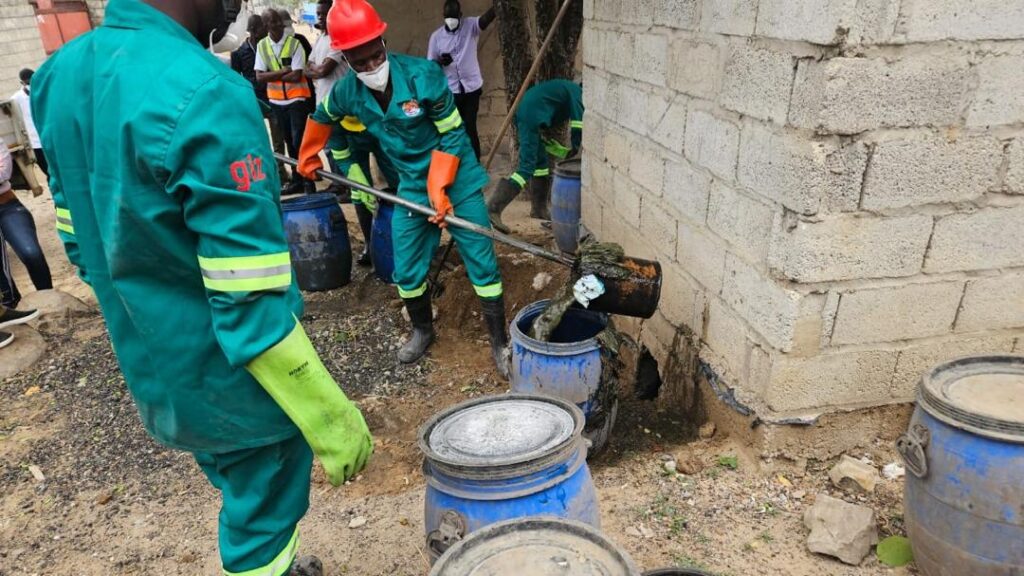Emptying and Transportation
Lusaka, Zambia.


Pit Emptying Equipment
To date, vacuum tankers are the most common equipment used for emptying of OSS systems. In Lusaka, private FSM operators generally use second hand vacuum trucks sourced from Europe and Japan, although their limited suction performance and/or large size make them less appropriate when thick sludge from pit latrines has to be pumped over large distances (> 30 meters), which is often necessary as the trucks are too large to navigate through narrow lanes in order to empty the latrines at close range. Most vacuum tank operators opt to only service lined facilities and septic tanks on account of the challenges of emptying unlined pits which are often characterised by high sand and solid waste content.
Operations of the Disposal & Treatment Plants
The FSTP disposal sites operate within regular working hours, opening at 08hrs and closing at 17 hrs. At the national level, a Health and Safety Policy exists which covers topics such as the provision and usage of PPE gear. LWSC has also developed a Standard Operating Procedure (SOP) for the emptying and transport of faecal sludge. It covers the usage of PPE gear, contaminated items, and instructions for safe emptying (including manual), transport, and disposal of FS. Additionally, the SOP covers employee health and vaccination. Employers are obligated to pay for the medical assessments of their employees, including pre- employment baseline examinations, annual examinations, and exit examinations. The employer also needs to ensure that workers who are involved in emptying of pit latrines or septic tanks have vaccines for hepatitis B, cholera and typhoid.
By law, health and safety training is mandatory for any worker handling hazardous material. LWSC provides training to sanitation workers on health and safety through external bodies such as the Occupational Health and Safety Institute. LCC also holds periodic orientation and sensitisation meetings to ensure that all workers are informed about the National Health and Safety Policy. Compliance is monitored and enforced. Other institutions that are currently training sanitation workers include the Lusaka Vocational and Technical Collage (LVTC) which recently updates its curriculum to include training courses for Sanitation workers.

Monitoring and Evaluation System
LWSC developed a monthly performance scorecard to support the monitoring of (formal) operators in the FSM market and to inform the verification process. This scorecard was aligned with national standards and based on international experience and included 14 KPI’s grouped into three categories:
1. Occupational health & safety indicators (following the Standard Operating Procedures for faecal sludge emptying, transport and disposal).
2. Customer management indicators (service provided to customers, complaints and entry into the national database).
3. Public safety during collection and transport indicators (safety during emptying, transport and correct disposal)
The scorecard was designed to be a simple self-reporting process, minimizing the administrative burden for operators with independent verification. Each KPI included a verifiable indicator, a target – below which the KPI was failed – and a weighting. The overall weighted score of all KPIs was used to modify payments where the overall score fell below a threshold of 70%.
Initially, customer satisfaction was based on a simple measure of the frequency of customer complaints received by LWSC regarding emptier’s. Following the first year of the program, the verification agent developed a more sophisticated customer satisfaction index (CSI) which used a Likert scale to capture perceptions on;
(1) response time to a call for service;
(2) experienced quality of service delivery; and
(3) courtesy of operator staff. After being trialled for one year, the CSI was incorporated into the KPI score card in 2021.
